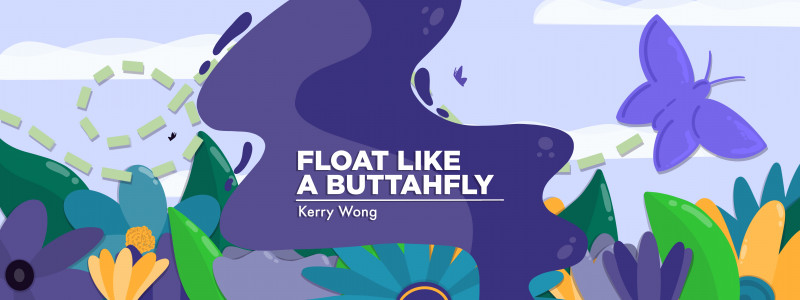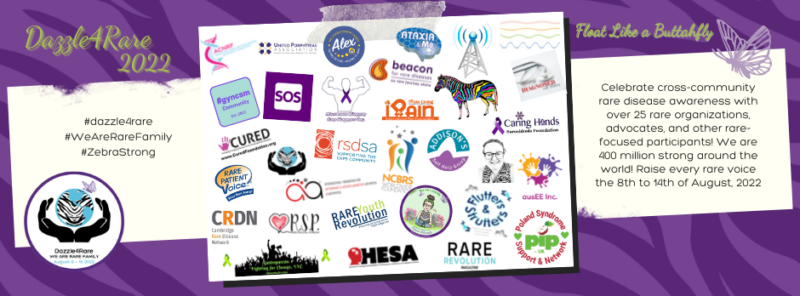How rare disease advocates can amplify one another’s voices
When communities join forces, it can lead to greater awareness for all
Written by |

When I was diagnosed with “some kind of arthritis, probably autoimmune” in 2011, I wanted to learn all I could. After years of being dismissed and disregarded by doctors because I “looked fine,” even this nondiagnosis was a big step for me. It was validation, after all those years, that I wasn’t imagining things, that I knew my body, and that I was right about something being wrong.
A quick internet search led me to organizations that offered information and support, and I immediately got involved in every way possible. I’ll never forget my first Walk to Cure Arthritis kickoff — never before had I heard another patient share a story that sounded so much like mine. As I sat there with tears in my eyes, I knew I was in the right place.
When I was finally diagnosed with sarcoidosis four years later, I again found ways to connect with people who understood what I was going through. Together, we began to raise awareness about this disease through in-person events and social media campaigns.
These efforts are somewhat limited, though, because our reach is limited. Because sarcoidosis is a rare disease, the people who see our posts are often the ones who already have a vested interest in the sarcoidosis community. It’s still necessary and empowering work, but it can sometimes feel like we’re preaching to the choir.
Joining forces to boost awareness
That’s precisely why Kimberly Thomas-Tague began the #Dazzle4Rare movement, a weeklong awareness campaign in August that brings individual rare disease communities together for greater impact. Both Kimberly and her son live with rare diseases, so this cause truly hits home, and not just for them. I chatted with her over Zoom.
“The natural goal of Dazzle4Rare is to amplify the signals of other people,” she explained. Participants are encouraged to share messages from other rare disease communities. It gives us a chance to preach to a different choir, so to speak; or better yet, a chance to preach to dozens of other choirs — and to hear from dozens more ourselves.
Dazzle4Rare began as a simple grassroots movement in 2016 with few participants and no website. It has grown exponentially, with the 2022 campaign bringing in 30 patient organizations and advocate co-hosts worldwide while generating over 9 million Twitter impressions.

The co-hosts of Dazzle4Rare 2022: We are rare family. (Graphic by Kerry Wong)
I reached out to a few other co-hosts through our social platforms.
Carole Scrafton is a patient advocate and board member with Flutters and Strutters, a combination of FibroFlutters (focusing on chronic illnesses) and Zebra Strutters (focusing on rare and undiagnosed disorders). They support the Ehlers-Danlos syndrome (EDS) community, among others, as several of their members live with EDS.
Carole said Dazzle4Rare offers “an opportunity to help raise awareness for those who really need the extra voices.” She added, “Communities supporting other communities is key to all of our survival and [Dazzle4Rare] helps to keep us all connected.”
Judith Flanagan is a friend and fellow patient who advocates under the banner of United Advocacy Australia. She lives with and advocates for a long list of conditions, including polymyalgia rheumatica, especially rare for someone her age. Judy says she was “one of the OG girls” with Dazzle4Rare. This campaign brings her “connection, friendships, and … always an opportunity to learn and show support to others.”
Rare Patient Voice, created in 2013 when founder Wes Michael “saw the need for connecting patients and caregivers to medical research,” joined Dazzle in 2022. I was able to chat with Stacey Haines, the organization’s patient and social media outreach associate, whose daughter lives with several conditions, including eosinophilic esophagitis. Stacey told me they “appreciated the connections that were made and the awareness that was brought forth” during last year’s event.
When I discovered Dazzle4Rare in 2021, I fell in love with it instantly and jumped in with both feet. It’s been exciting to see sarcoidosis information spread so far beyond our own little community, and I’ve learned and shared so much about the other rare conditions represented.
One of the greatest things to come from my involvement is the number of people saying “Oh, I have that” or “I know someone who has that.” By lifting each other’s voices and sharing each other’s messages, we’re able to not only develop new friendships, but also to strengthen the ones we already have.
Dazzle4Rare is still six months away, but Rare Disease Day is right around the corner. As we approach Feb. 28, let’s follow Dazzle’s lead: Share information about your rare disease, but don’t stop there. Join Bionews, the parent company of this website, in sharing #WhyRare disease awareness matters to you. Check out the dozens of rare disease communities, rare disease organizations, and more. You never know who might know someone who knows someone who could really use the information you just happened to share.
Note: Sarcoidosis News is strictly a news and information website about the disease. It does not provide medical advice, diagnosis, or treatment. This content is not intended to be a substitute for professional medical advice, diagnosis, or treatment. Always seek the advice of your physician or other qualified health provider with any questions you may have regarding a medical condition. Never disregard professional medical advice or delay in seeking it because of something you have read on this website. The opinions expressed in this column are not those of Sarcoidosis News or its parent company, Bionews, and are intended to spark discussion about issues pertaining to sarcoidosis.







Leave a comment
Fill in the required fields to post. Your email address will not be published.